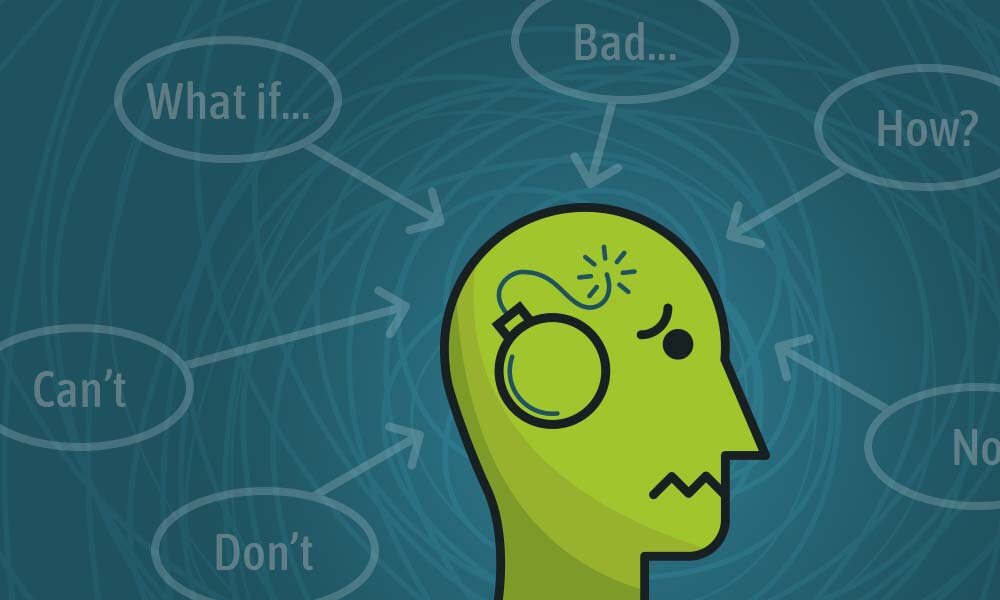5 Tips to Help Your Panic Attack
Author: Krystal Galvan, M.A.
A panic attack is an intense surge of fear and anxiety that seems as if it arrives spontaneously. Panic attacks can feel overwhelming and are often characterized by physical sensations such as difficulty breathing, sweating, trembling, and increased heart rate.
Many researchers believe that anxiety is a survival “fight or flight” response to life-threatening situations faced by our distant ancestors (“Do I fight this bear that has entered my cave or run away?”). Panic attacks seem to be a modern response to a “false” narrative of danger that our mind perceives. In other words, experiencing a panic attack before a big presentation at work is the “2019 version” of responding to life-threatening situations faced by our ancestors.
Identifying the triggers of your panic and creating coping strategies will help you feel more in control of your symptoms. Here are five tips that will help your panic attacks:
1. Recognize Your Signs of Panic: It’s important to know when and why panic attacks happen for you. Try to write down the symptoms that you notice during a panic attack so you can recognize when those symptoms begin in the future (Sweaty palms? Tunnel vision? A heavy feeling on your chest?). Also try noticing what seems to spark the anxiety (Worried about a big presentation at work? In another fight with your girlfriend?). Knowing the signs and symptoms of your excessive worry will allow you to begin managing the anxiety before it escalates.
2. Sensory Bag: Keep a small “sensory bag” in your purse, backpack, or desk. In this bag keep a coping card,or list of coping tools such as your “happy place” you can visualize to calm you, a deep breathing exercise (more below), or a relaxing memory you can recall. In addition add comforting sensory items, like a calming song you enjoy, or essential oils like lavender, which are shown to be soothing. Adding tactile items such as Play-Doh, putty, or a stress ball can help distract and channel your physical energy away from a panic attack.
3. Deep Breathing: Utilizing deep diaphragmatic breathing allows the body to relax. Try placing one hand on your stomach and another over your heart. Feel your body rise and fall with each breath. Try to slow down the breathing so that you’re inhaling for a count of 3, holding for 3, and exhaling for 3. This technique will serve both as a grounding and calming tool.
4. Dive Technique: The body is designed to be alert and decisive during the initial moments of contact with cold water, it’s what allows us to avoid panic and hypothermia if we were to fall into a cold river or lake. Use this weird evolutionary tool to your advantage by splashing cold water on your face during a panic attack. Often, it will help your brain correctly identify the “false” narrative of your panic (after all, you’re not in actual imminent physical danger).
5. Practice Mindfulness & Meditation: Mindfulness can help ground one back to reality. Placing your hand on a cold wall, identifying things you can touch, see, hear, smell, and taste will activate sensory grounding. Tapping your left hand on your left thigh and your right hand on your right thigh will help connect the left and right hemispheres of the brain to work cohesively creating calmness. Utilizing familiar sensations when a panic attack is approaching or occurring will serve as distraction and help bring one back to reality. Daily meditation will allow the body and soul to work holistically to achieve calmness. A daily practice in the morning can help begin the day with slowness and more awareness preventing the “hustle and bustle” of everyday to consume one. Meditation can also be used throughout the day as needed. Apps such as the Calm App and Headspace provide various types of meditations. In a moment where panic begins a calming mantra such as, “I am safe right now” can be utilized.




